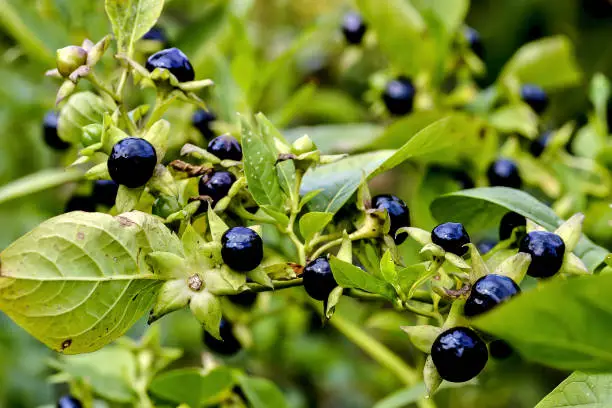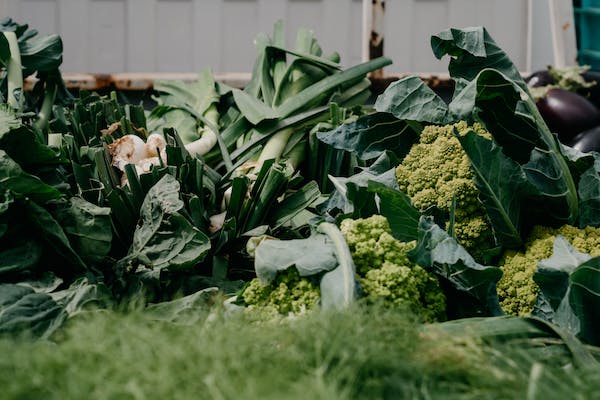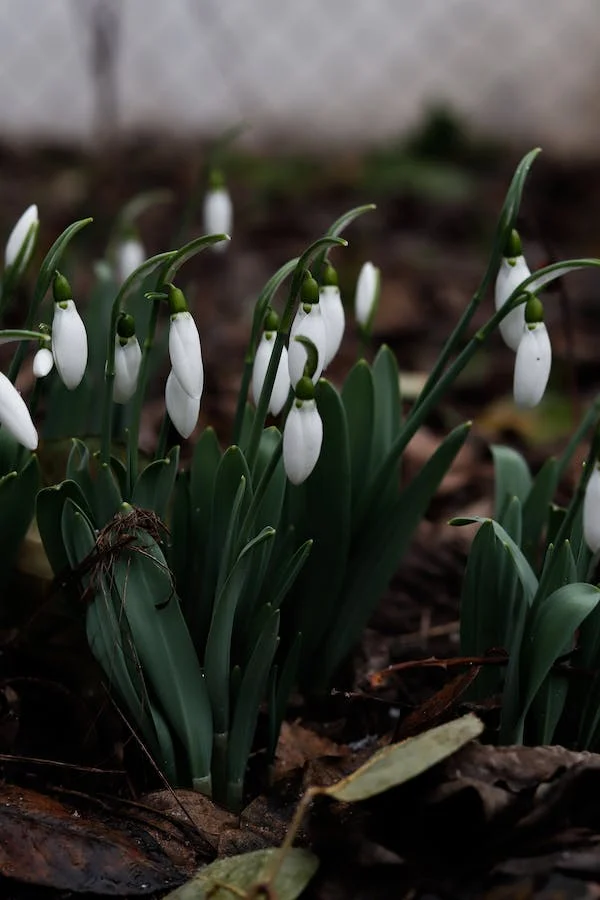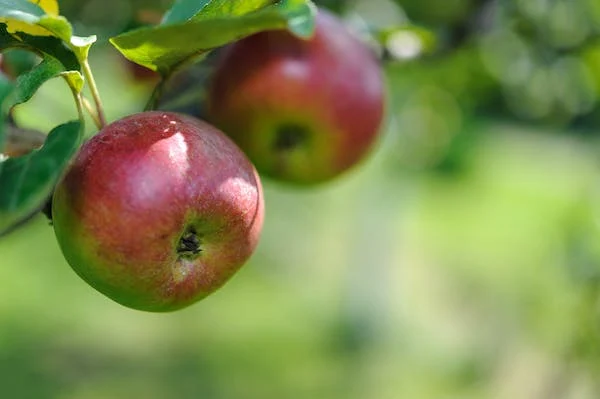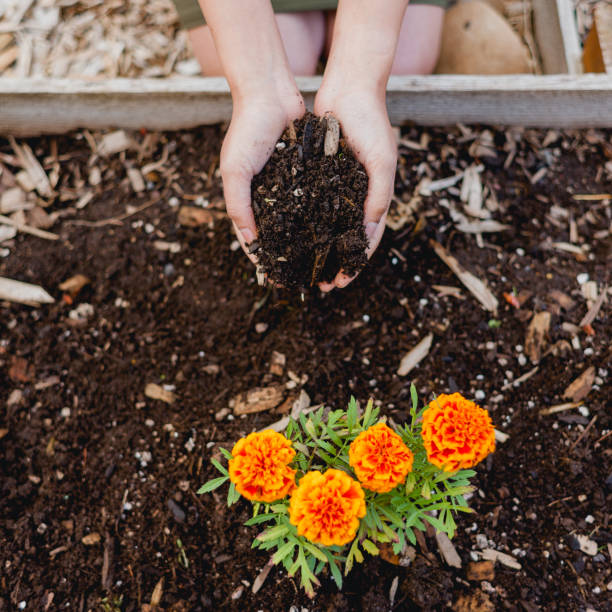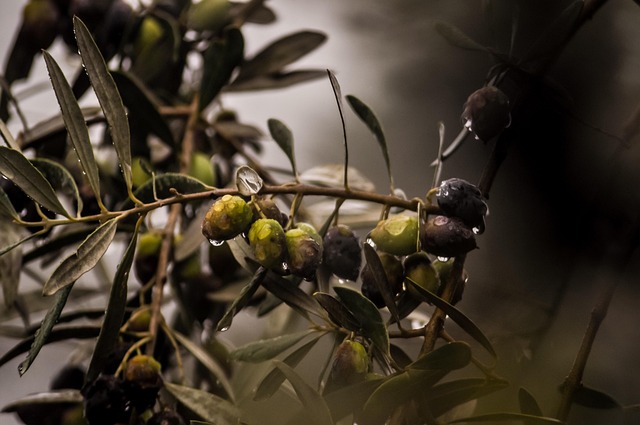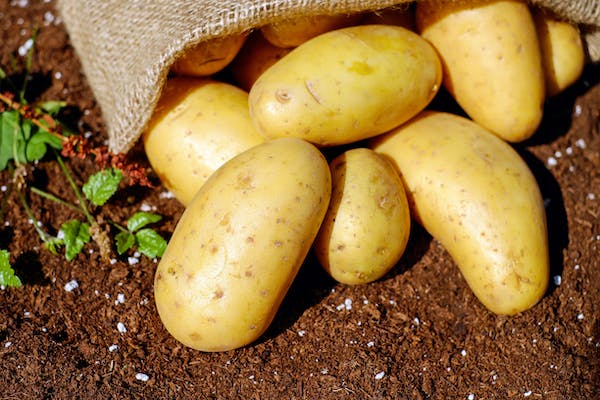12 Poisonous Plants that you should always Handle with Gloves
Wearing gloves is important when dealing with certain plants. If you touch these plants without gloves, the poison can get on your skin, and if it gets into your eyes or mouth, it can be deadly. So, for your safety, always wear gloves when handling these plants.
Always be cautious, and let gloves be your safeguard against the hidden dangers of the botanical world.
12 Poisonous Plants that you should always Handle with Gloves
Some plants might seem harmless at first glance, but they hide a dangerous secret. Their leaves, stems, or even their sap can contain toxins that are harmful to humans. One example is the beautiful but treacherous oleander, whose vibrant flowers belie its deadly nature.
Another is the innocuous-looking castor bean plant, harbouring one of the most lethal poisons known to man. These plants don’t give any warning signs, and their toxins can easily transfer to your skin. This is why wearing gloves is not just a precaution; it’s a crucial shield between you and potential harm.
Deadly Nightshade (Atropa Belladonna)
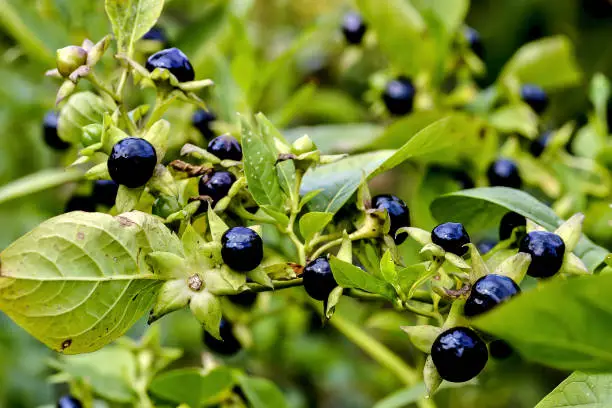
Deadly Nightshade, also known as Purple Nightshade, is a highly toxic plant that poses severe health risks. It contains tropane alkaloids, such as atropine and scopolamine, which can have detrimental effects on the human body if ingested or even touched without proper protection.
Consumption of any part of this plant can lead to symptoms like hallucinations, confusion, rapid heartbeat, and even death in extreme cases. To ensure your safety and well-being, it is essential to avoid any contact with Deadly Nightshade.
Never attempt to consume or handle this plant without expert knowledge and proper protective gear. This is a prime example of why it’s crucial to be aware of the potentially deadly flora in our environment and exercise extreme caution around them. Your health and safety should always come first.
Hydrangea ( Hydrangea macrophylla)
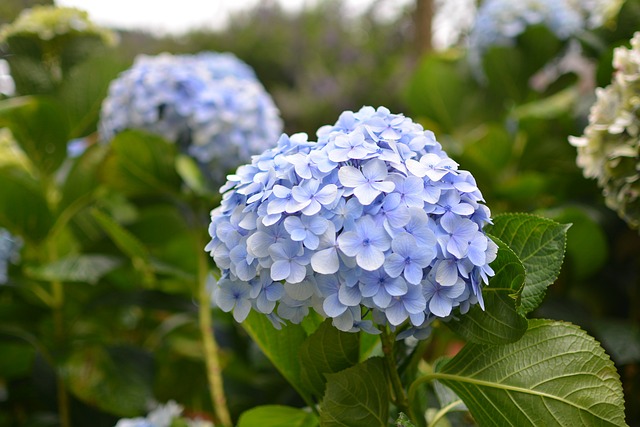
Hydrangea macrophylla, commonly known as hydrangea, is a beautiful ornamental plant often used in gardens and flower arrangements. However, it’s essential to be aware that hydrangeas contain cyanogenic glycosides, which can release cyanide when ingested.
While the cyanide levels in hydrangeas are generally low, it’s still important to exercise caution. Consuming any part of the hydrangea plant can lead to health issues. Cyanide poisoning can cause symptoms such as nausea, vomiting, dizziness, and difficulty breathing, and in severe cases, it can be life-threatening.
To stay safe, it’s best to avoid consuming hydrangeas or using them in culinary preparations. Keep them out of reach of children and pets, as accidental ingestion can be dangerous.
Enjoy the beauty of hydrangeas in your garden or as decorative flowers, but remember not to incorporate them into your food or drinks to prevent any potential health risks.
European Mistletoe (Viscum Album)
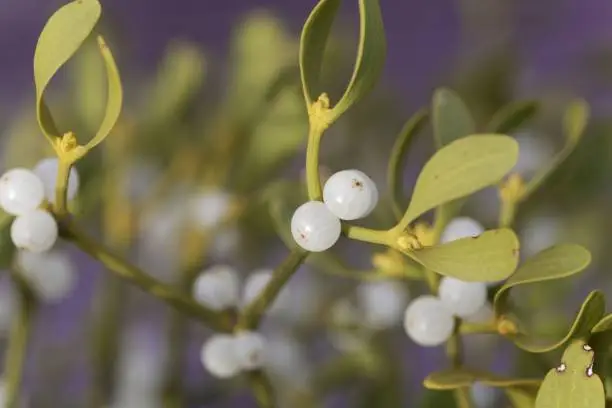
It’s a parasitic plant that attaches itself to the branches of trees and shrubs. While it has become associated with Christmas traditions, particularly for kissing under it, it’s important to be aware of its potential health risks.
It has a strong association with Christmas traditions, often used as a decoration during the holiday season. However, it’s important to be aware of its potential health risks.
The white berries of European Mistletoe contain compounds that can be toxic if ingested. Ingesting mistletoe berries can lead to symptoms such as stomach pain, nausea, vomiting, and diarrhoea, and in severe cases, it can be harmful, especially for children or pets.
To ensure safety, it’s advisable to avoid consuming European Mistletoe or allowing children or pets to come into contact with it. If you choose to use mistletoe as a decoration, make sure it’s out of reach and not easily accessible. While it’s a festive symbol, it’s best enjoyed from a distance to prevent any potential health issues.
Lily of the valley (Convallaria Majalis)
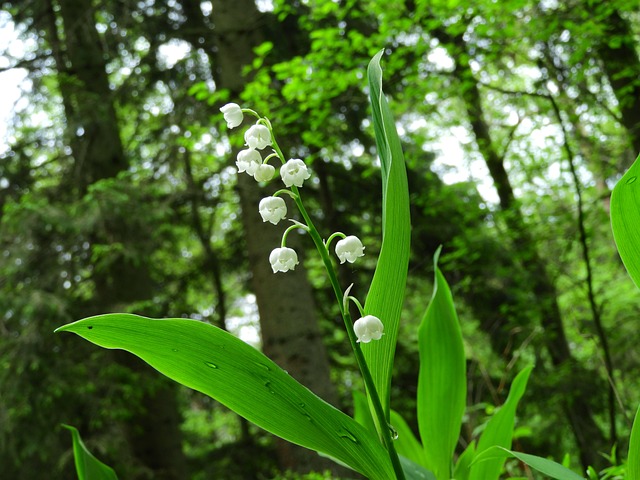
Lily of the Valley, scientifically known as Convallaria Majalis, is a charming and fragrant flowering plant often used in gardens and floral arrangements. However, it contains cardiac glycosides, which are compounds that can have a powerful effect on the heart.
The cardiac glycosides in Lily of the Valley can be toxic if ingested, and they can lead to symptoms such as nausea, vomiting, diarrhoea, slowed heart rate, and even heart rhythm disturbances. In severe cases, ingestion of this plant can be life-threatening.
To ensure your safety and the safety of others, it’s essential to avoid consuming any part of Lily of the Valley. If you have it in your garden or as a decoration, be cautious, especially if you have children or pets around.
Lily of the Valley may be lovely to look at, but its cardiac glycosides make it a plant to admire from a distance rather than ingest.
Larkspur (Delphinium)
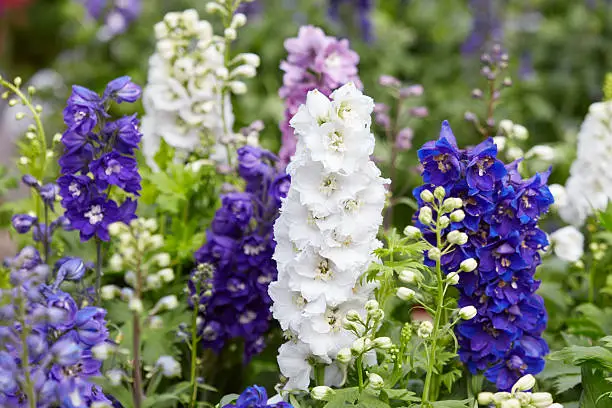
Larkspur, which belongs to the Delphinium genus, is a stunning flowering plant known for its tall, spiky blossoms and vibrant colours. However, it’s important to be aware that certain parts of the plant, particularly the seeds and flowers, can be more dangerous than others.
The seeds and flowers of Larkspur contain alkaloids that can be toxic if ingested. Ingesting these parts of the plant can lead to symptoms such as nausea, vomiting, and abdominal pain, and in severe cases, it can affect the nervous system and the heart.
To ensure your safety and the safety of others, it’s advisable to be cautious when handling Larkspur, especially if you have young children or pets. Enjoy the beauty of this plant in your garden or floral arrangements, but be mindful of its potential toxicity, particularly when it comes to the seeds and flowers.
Common Hogweed (Heracleum sphondylium)
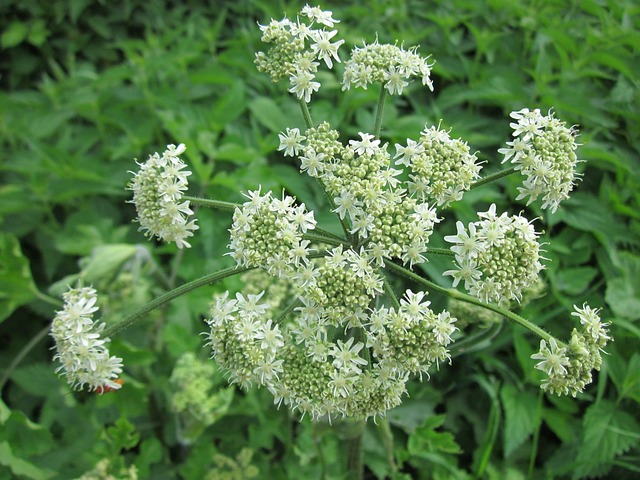
Common Hogweed, scientifically known as Heracleum Sphondylium and a member of the Apiaceae family, is an herbaceous plant that grows in various regions. One notable characteristic of this plant is that its sap contains a compound called furocoumarin.
Furocoumarins are chemicals found in some plants that can make the skin more sensitive to sunlight. When the sap of Common Hogweed comes into contact with the skin and is then exposed to sunlight, it can lead to a condition known as phytophotodermatitis. This condition can result in painful skin blisters and burns.
Wolfsbane (Aconitum)
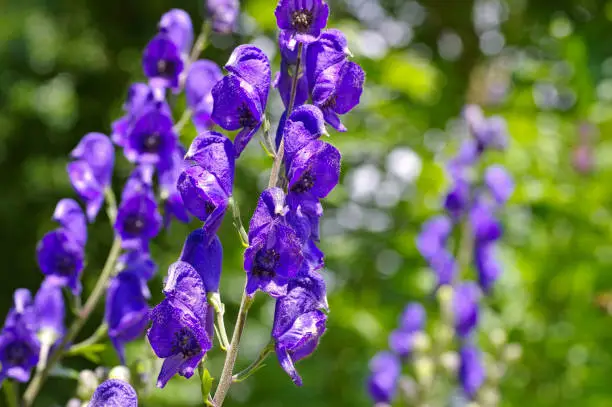
Wolfsbane, scientifically known as Aconitum, is a highly toxic plant known for its striking blue to purple hood-shaped flowers. This plant is also commonly referred to by several other names, including Monkshood and Aconite. Its various names reflect its historical use in both traditional medicine and as a poison.
While Wolfsbane has a long history of use in herbal remedies, it’s important to note that all parts of the plant contain potent alkaloids that can be deadly if ingested or even touched without proper precautions. The plant’s toxicity has earned it a reputation as one of the most dangerous plants in the natural world.
Foxgloves

Foxgloves, scientifically known as Digitalis purpurea, are beautiful flowering plants that grace gardens with their tall spikes of tubular flowers. However, they contain potent compounds known as cardiac glycosides, which can be toxic if ingested.
Ingesting any part of the Foxglove plant, especially the leaves and flowers, can lead to a condition called digitalis toxicity or digitalism. This can have serious health consequences, including nausea, vomiting, diarrhoea, irregular heart rhythms, and even heart failure.
To safeguard your health, it’s crucial to avoid consuming Foxgloves or using them in culinary preparations. If you have these plants in your garden, be cautious, especially if you have children or pets. Foxgloves may be captivating to look at, but it’s important to handle them with care and be aware of their potential health risks.
Oleander ( Nerium oleander)
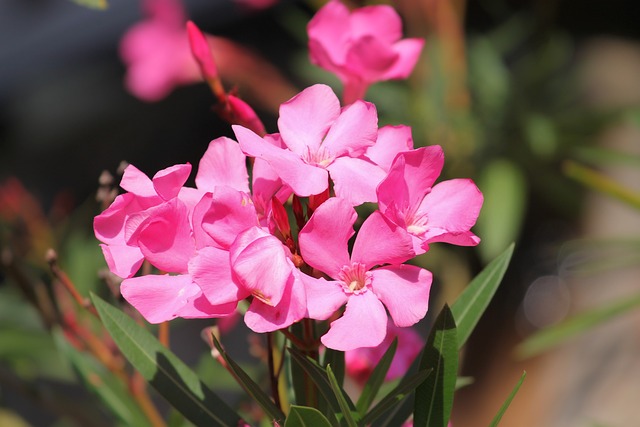
Oleander, scientifically known as Nerium oleander, is a striking flowering shrub known for its vibrant blossoms. However, it’s important to be aware that Oleander contains toxic compounds, including saponins.
The presence of saponins in Oleander makes it highly poisonous. Ingesting any part of this plant, including its leaves, flowers, or stems, can lead to severe health issues. Symptoms of Oleander poisoning can include nausea, vomiting, diarrhoea, and irregular heart rate, and in severe cases, it can be fatal.
To ensure your safety and the safety of others, it’s crucial to avoid any contact with Oleander and refrain from using it in culinary or medicinal preparations. Even inhaling the smoke from burning Oleander can be dangerous. Enjoy Oleander for its beauty from a safe distance, and always exercise caution when dealing with this toxic plant.
Poison Ivy (Toxicodendron radicans)

Poison Ivy (Toxicodendron radicans) is a notorious plant known for causing skin irritation upon contact. It’s characterized by its distinctive three-leaf clusters. The leaves contain a substance called urushiol, which can trigger allergic reactions in many people.
If you come into contact with Poison Ivy, the urushiol can cause itching, redness, swelling, and the development of a rash. It’s important to wash the affected area with soap and water as soon as possible and avoid scratching, as it can worsen the irritation and spread the rash.
To prevent Poison Ivy exposure, it’s essential to learn how to recognize the plant and take precautions such as wearing long sleeves and gloves when working outdoors, especially in areas where Poison Ivy may be present.
Bittersweet Nightshade
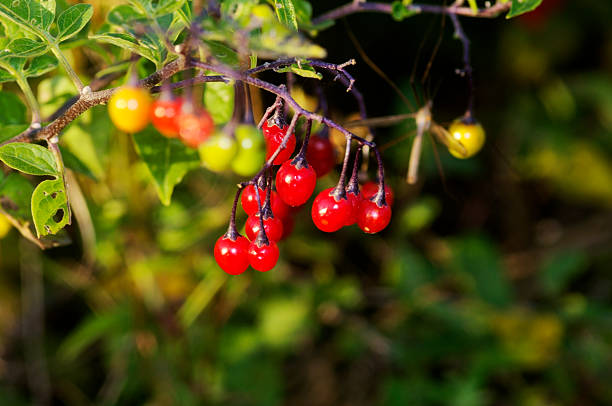
Bittersweet Nightshade (Solanum dulcamara) is a woody vine that produces small, purple flowers and bright red berries. While it may seem attractive, this plant contains toxic compounds, including solanine and glycoalkaloids, which can be harmful if ingested.
Consuming any part of the Bittersweet Nightshade plant, especially its berries, can lead to symptoms such as nausea, vomiting, abdominal pain, and in severe cases, it can affect the nervous system.
Jimson Weed
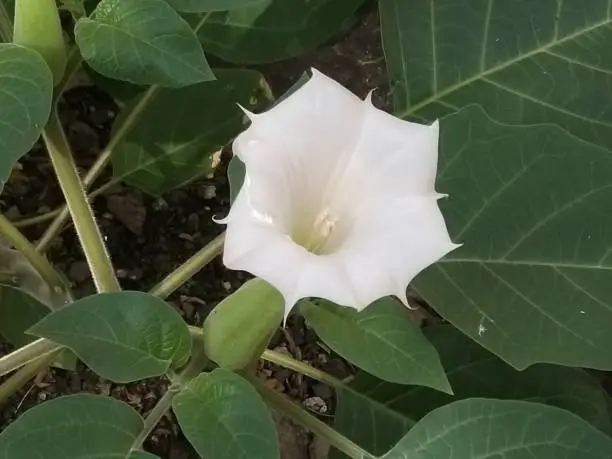
Jimson Weed, also known as Datura stramonium, is a highly toxic plant that can have dangerous effects on both humans and animals. It contains a group of alkaloids, including scopolamine, hyoscyamine, and atropine, which can cause severe poisoning if ingested.
Ingesting any part of the Jimson Weed plant can lead to a range of symptoms, including hallucinations, confusion, rapid heart rate, dilated pupils, dry mouth, and in extreme cases, it can result in seizures, coma, or even death.
Due to its extreme toxicity, it’s essential to avoid any contact with Jimson Weed and to ensure it is not accidentally ingested. The plant is known for its psychoactive properties, which have led to its misuse for recreational purposes, but this can have grave consequences.
Jimson Weed should be approached with extreme caution and never used for any purpose other than botanical study by experts.
Frequently Asked Questions
Are there any medicinal uses for Foxgloves despite their toxicity?
Yes, despite their toxicity, Foxgloves have been used in medicine to extract a compound called digoxin, which can be beneficial for certain heart conditions when used under strict medical supervision. However, self-medication with Foxgloves can be extremely dangerous and is not recommended.
Can Oleander’s toxicity affect pets, and what should I do if my pet ingests Oleander?
Yes, Oleander is toxic to pets, including dogs and cats. If you suspect your pet has ingested Oleander, seek immediate veterinary attention. Symptoms can include drooling, vomiting, diarrhoea, and more severe reactions, so quick action is crucial.
Is there any legitimate use for Jimson Weed in traditional medicine or herbal remedies?
Answer: Jimson Weed has been used historically in some traditional practices, but its extreme toxicity makes it a dangerous choice. Its psychoactive properties can have severe and unpredictable effects, so it should never be used for any purpose other than botanical study by experts.
Conclusion:
In the realm of nature’s astonishing diversity, there exists a captivating but perilous side inhabited by poisonous plants. As we’ve explored the botanical wonders that demand our respect and caution, it’s abundantly clear that some of these plants harbour secrets that can have severe consequences for our health.
In the delicate balance between fascination and safety, our understanding of these plants underscores the importance of knowledge, precaution, and the humble glove as our steadfast guardian in the face of botanical peril.
